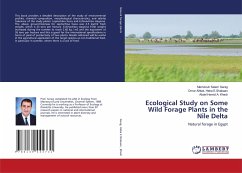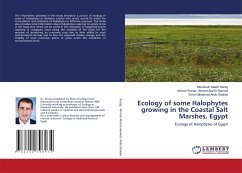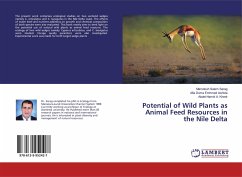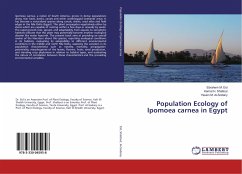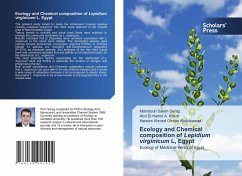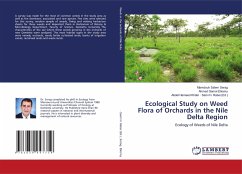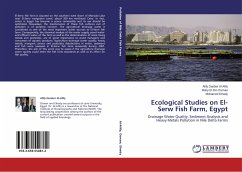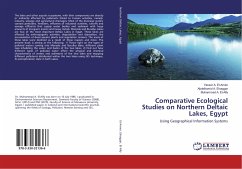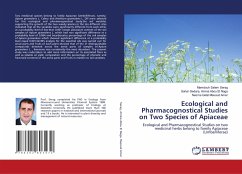
Ecological and Pharmacognostical Studies on Two Species of Apiaceae
Ecological and Pharmacognostical Studies on two medicinal herbs belong to family Apiaceae (Umbelliferae)
Versandkostenfrei!
Versandfertig in 6-10 Tagen
41,99 €
inkl. MwSt.

PAYBACK Punkte
21 °P sammeln!
Two medicinal species belong to family Apiaceae (Umbelliferae), namely; Apium graveolens L. Celery and Anethum graveolens L. Dill were selected for this ecological and pharmacognostical study.the soil variables supporting the growth of the two weedy species in the ten different sites indicated that all the variables were significantly different from each other at a probability level of less than 0.001 except potassium content of the soil samples of Apium graveolens L. which had non significant difference at a probability level of 0.064 and bicarbonates percentage of the soil samples of Apium g...
Two medicinal species belong to family Apiaceae (Umbelliferae), namely; Apium graveolens L. Celery and Anethum graveolens L. Dill were selected for this ecological and pharmacognostical study.the soil variables supporting the growth of the two weedy species in the ten different sites indicated that all the variables were significantly different from each other at a probability level of less than 0.001 except potassium content of the soil samples of Apium graveolens L. which had non significant difference at a probability level of 0.064 and bicarbonates percentage of the soil samples of Apium graveolens which showed significant difference at a probability level equal 0.001.GC/MS analysis for the essential oils was carried out for aerial parts and fruits of each plant showed that of the 21 distinguishable compounds detected across the aerial parts oil samples of Apium graveolens L. , limonene was consistently the most abundant. The present study was undertaken to add more information on its associated flora as well as volatile oil yield, composition and the percentage of phenolic and flavonoid contents of the aerial parts and fruits in relation to soil variables.




